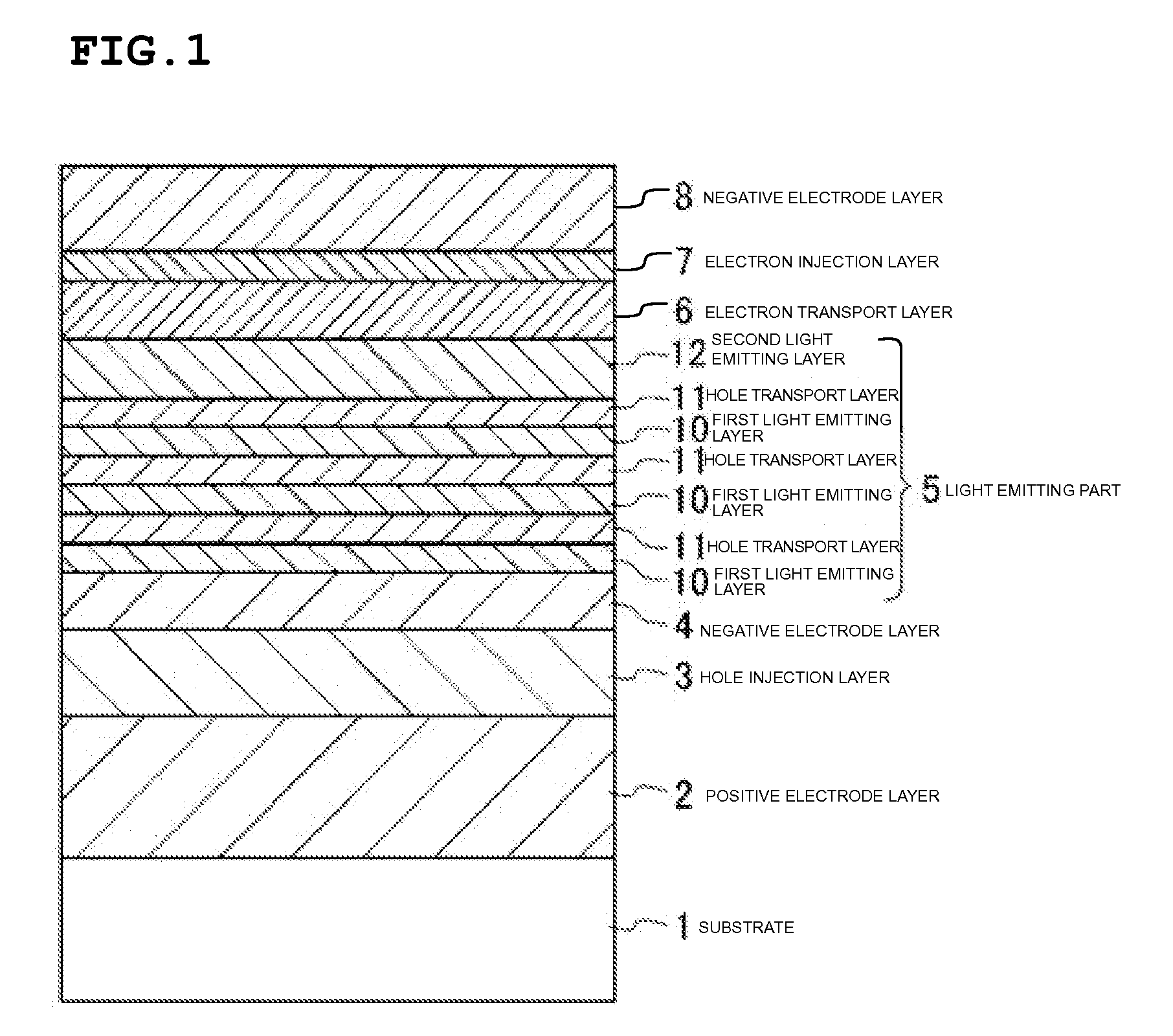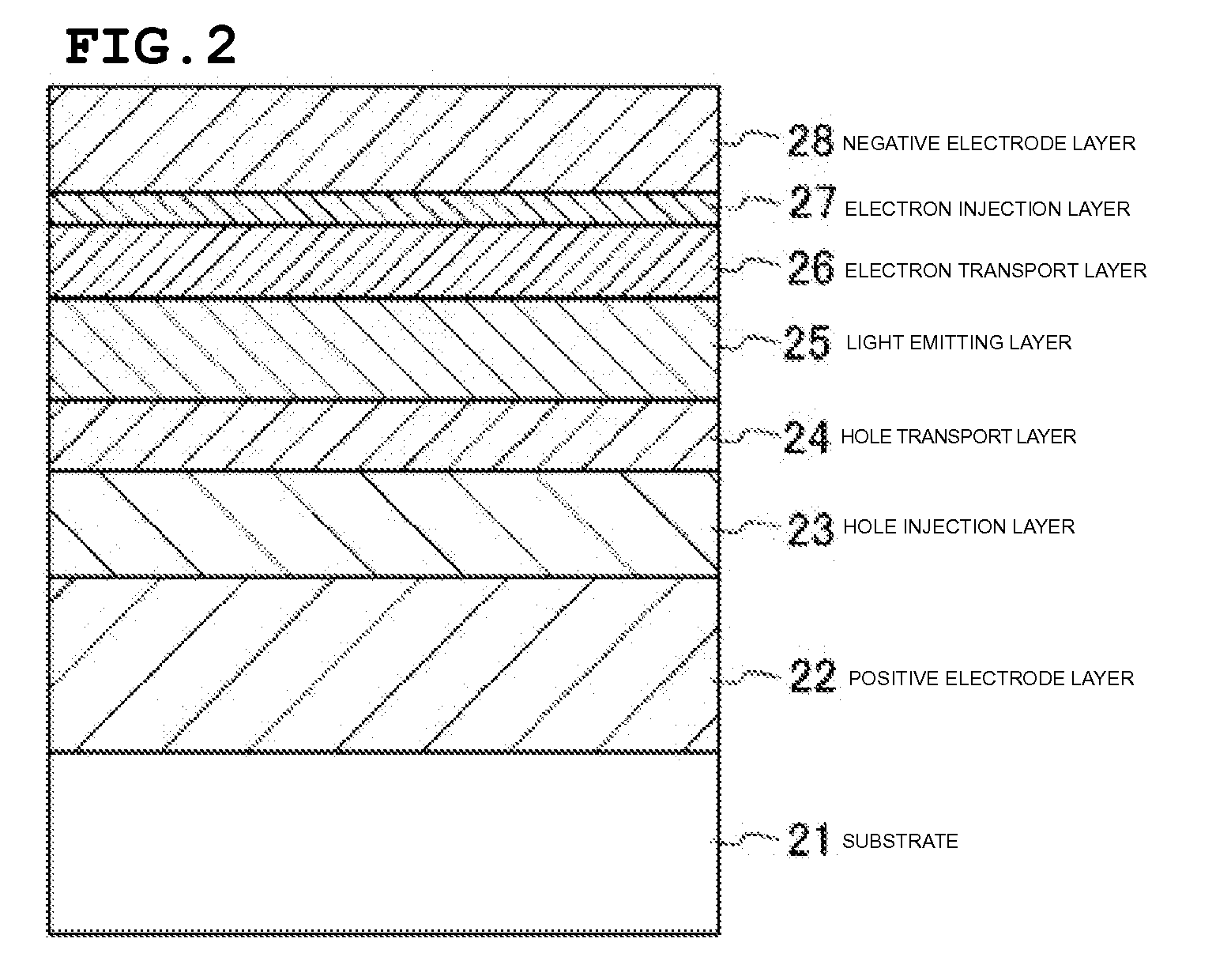Organic el component
a technology of organic el and components, applied in the direction of discharge tube luminescnet screens, natural mineral layered products, transportation and packaging, etc., can solve the problems of increasing and achieve the effect of enhancing luminous efficiency and minimizing the attenuation of luminous efficiency and luminan
- Summary
- Abstract
- Description
- Claims
- Application Information
AI Technical Summary
Benefits of technology
Problems solved by technology
Method used
Image
Examples
Embodiment Construction
[0023]Hereinafter, preferred embodiments of the present invention will be described with reference to the drawings. FIG. 1 shows a sectional structure of an organic EL element according to a preferred embodiment of the present invention.
[0024]As shown in FIG. 1, in the organic EL element, a positive electrode layer 2, a hole injection layer 3, a hole transport layer 4, alight emitting portion 5, an electron transport layer 6, an electron injection layer 7, and a negative electrode layer 8 are laminated on a substrate 1.
[0025]The light emitting portion 5 has three first light emitting layers 10, three hole transport layers 11, and a second light emitting layer 12. The three first light emitting layers 10 and the three hole transport layers 11 are alternately laminated.
[0026]Since this organic EL element is configured to emit light from the side of the substrate 1, a transparent substrate transmitting light such as a glass substrate is used for the substrate 1. Similarly, the positive...
PUM
| Property | Measurement | Unit |
|---|---|---|
| thickness | aaaaa | aaaaa |
| thickness | aaaaa | aaaaa |
| thickness | aaaaa | aaaaa |
Abstract
Description
Claims
Application Information
 Login to View More
Login to View More - R&D
- Intellectual Property
- Life Sciences
- Materials
- Tech Scout
- Unparalleled Data Quality
- Higher Quality Content
- 60% Fewer Hallucinations
Browse by: Latest US Patents, China's latest patents, Technical Efficacy Thesaurus, Application Domain, Technology Topic, Popular Technical Reports.
© 2025 PatSnap. All rights reserved.Legal|Privacy policy|Modern Slavery Act Transparency Statement|Sitemap|About US| Contact US: help@patsnap.com



